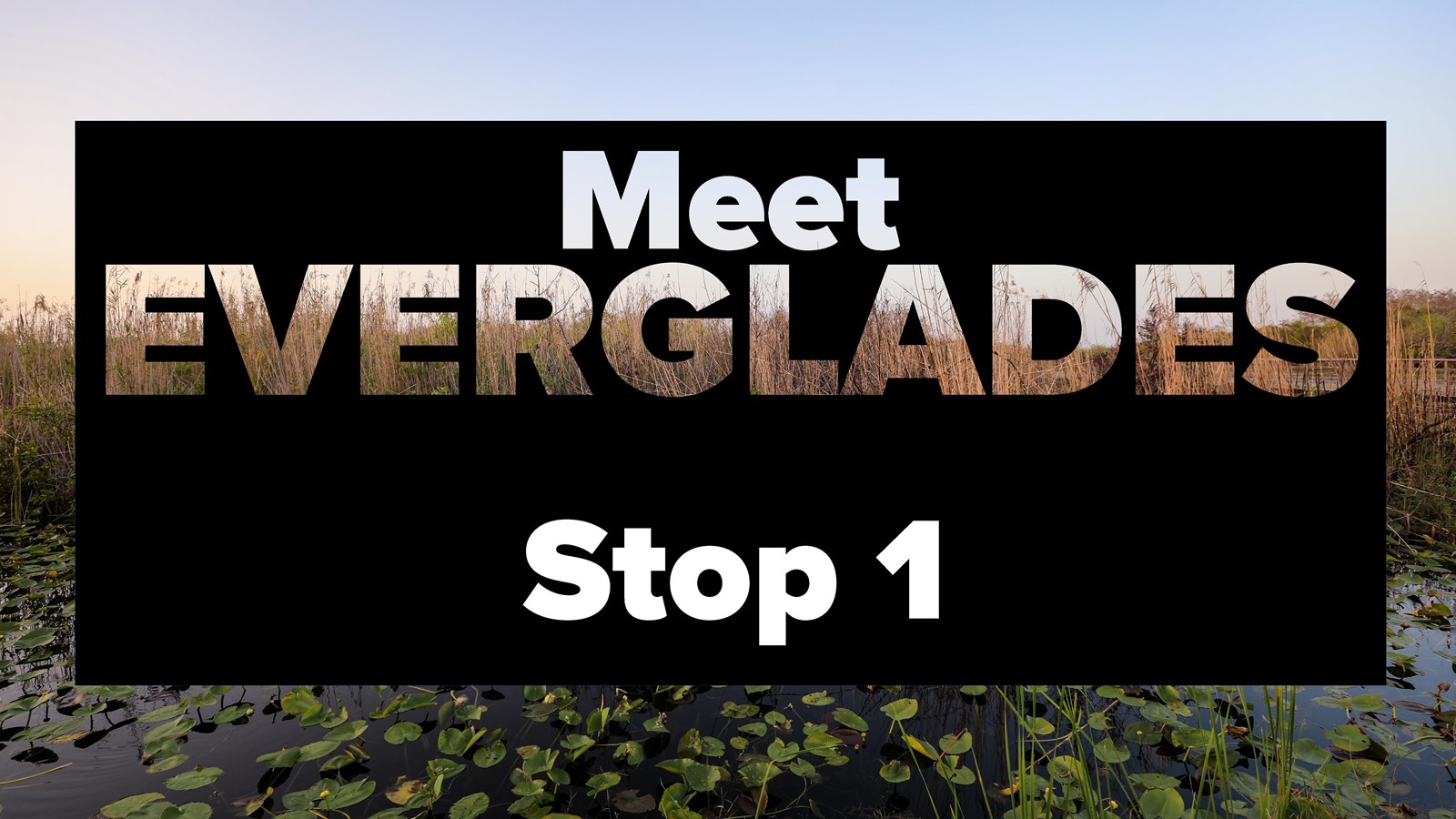Last updated: June 10, 2025
Place
Meet Everglades Stop 1

NPS Graphic
First Stop:
Welcome to Everglades National Park.
You’re standing in one of the most unusual and important landscapes in the United States.
This audio tour will be your guide—not to replace a ranger presentation which will go more in depth to the stories of the Everglades and Everglades National Park (Which you should still do if you are given the opportunity!) --, but this audio tour, is to offer a chance to meet the Everglades and at least understand a portion of what makes this place special.
We’ll walk together and explore how this land came to be, why it matters, and the stories that continue to unfold here. At each stop along the way, we’ve provided you with a gallery of images to help you visualize the narrations and different stories.
So, with no further ado, let me introduce you—please, meet Everglades.
[Pause, then gentle fade-in of ambient nature sounds in the early morning at the Anhinga Trail.]
Take a moment to look around you, you’re standing at the edge of a borrow pit, a pool of water left behind by the excavating material used to build the foundation of the Royal Palm contact station behind you. This very water is the blood of Everglades, its circulation throughout the area allows Everglades National Park to thrive.
Everglades National Park protects the southernmost portion of a vast wetland system stretching across much of South Florida. It’s hard to imagine just how big the greater Everglades are—over 1.5 million acres of it is protected parkland. And that’s just the southern tip of the original watershed. Historically, the Everglades once covered nearly a third of the state -- the Greater Everglades watershed was well over 11 million acres. Over 7 times larger than this massive National Park.
To understand this vast place and all its complexities, we need to start with two things -- the foundations of this landscape and what makes it unique: climate and geology. They set the stage for everything else—the plants, the animals, even the water itself.
Let’s begin with geology.
Over the past millions of years, sea levels have risen and dropped numerous times. They rose as much as about 30 feet (or over 9 meters) higher than where they are today. Each session of changing sea levels deposited layers of sediment that over time became layers of limestone, forming the bedrock of South Florida. Everywhere you stand in South Florida, you are standing on an ancient seabed.
The result? This landscape is flat. Incredibly flat.
Picture this: The distance from Lake Okeechobee in the north to Flamingo on Florida Bay to the south is approximately 116 miles. Over that entire distance, the elevation drops just 15 feet. That’s barely inches per mile. If you glance through the photos of the gallery, you’ll notice the aerial photos that emphasize the vast expanse of flatness I’m talking about.
Now adding to the flatness is the fact that Florida is a peninsula bordered by two vast bodies of water: the Gulf and the Atlantic Ocean. All that oceanic influence plays a huge role in our climate.
Even though we're north of the Tropic of Cancer, the Everglades feel tropical. Why? It’s all thanks to the humidity carried in from both coasts.
And like most tropical regions, we don’t have four seasons—we have just two: wet and dry.
[Cue the sound of thunderstorms.]
From May through October, it rains. A lot. We’re talking 55 to 65 inches (140 to 165 cm) of rainfall a year, mostly in heavy afternoon downpours, but also from intense but infrequent tropical storms.
From November to April, it's the dry season. The skies clear, the rains stop and the humidity drops.
These two factors—a flat limestone base and a tropical, two-season climate—create the conditions that define the Everglades.
[Cue the sound of water flowing in a stream.]
The large scale of South Florida is hard to image, so, here’s a picture for you:
Imagine South Florida is a table. But one of the legs is just slightly shorter, tilting the surface of the table a little to the south and the west. On the middle of that table is a plate—that’s Lake Okeechobee. During the wet season, a large pitcher of water starts to pour water on the plate and on the table – because during the wet season, it raining everyday somewhere on the Everglades. The water is splashing everywhere on the table, filling the plate to its brim and it spills over, which slowly runs down the table in a sheet flow of water also in the direction the table is leaning, to the south and west. And then when dry season approaches, the rain stops, the pitcher of water stops pouring but the water doesn’t stop running off the surface of the table. That sheet flow of water continues to drain off the table until there is a just a dribbling trace of the water that remains in slightly deeper depressions, areas that never fully dry up – these areas we call the sloughs. In reality, the Everglades, is not a narrow river, but a wide sheet of water, flowing across a vast prairie of grass, trees, and marshes.
That slow-moving, shallow water fluctuating with the two seasons, wet and dry, is the heartbeat, the rhythm, of the Everglades.
[Pause, bring back the early morning sounds of wildlife in the background.]
In the next stop, we’ll take a closer look at what distinctly happens to the Everglades throughout these two seasons with its flat landscape – and how life thrives here in these conditions.
